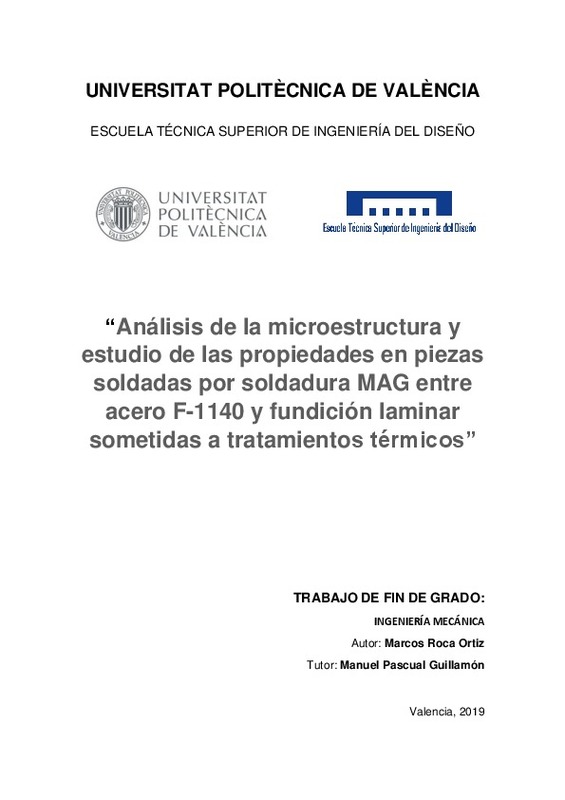JavaScript is disabled for your browser. Some features of this site may not work without it.
Buscar en RiuNet
Listar
Mi cuenta
Estadísticas
Ayuda RiuNet
Admin. UPV
Análisis de la microestructura y estudio de las propiedades en piezas soldadas por soldadura MAG entre acero F-1140 y fundición laminar sometidas a tratamientos térmicos
Mostrar el registro completo del ítem
Roca Ortiz, M. (2019). Análisis de la microestructura y estudio de las propiedades en piezas soldadas por soldadura MAG entre acero F-1140 y fundición laminar sometidas a tratamientos térmicos. Universitat Politècnica de València. http://hdl.handle.net/10251/127275
Por favor, use este identificador para citar o enlazar este ítem: http://hdl.handle.net/10251/127275
Ficheros en el ítem
Metadatos del ítem
| Título: | Análisis de la microestructura y estudio de las propiedades en piezas soldadas por soldadura MAG entre acero F-1140 y fundición laminar sometidas a tratamientos térmicos | |||
| Autor: | Roca Ortiz, Marcos | |||
| Director(es): | ||||
| Entidad UPV: |
|
|||
| Fecha acto/lectura: |
|
|||
| Resumen: |
[ES] El TFG Consiste en analizar las microestructuras generadas cuando se realizan uniones de soldadura entre dos materiales acero y fundición de distinta composición química por soldadura MAG, con aporte de hilo de acero ...[+]
[EN] The TFG consists in analyzing the microstructures generated when welding joints are made between two steel and cast iron materials of different chemical composition by MAG welding, with the contribution of F1120 steel ...[+]
|
|||
| Palabras clave: |
|
|||
| Derechos de uso: | Reserva de todos los derechos | |||
| Editorial: |
|
|||
| Titulación: |
|
|||
| Tipo: |
|
recommendations
Este ítem aparece en la(s) siguiente(s) colección(ones)
-
ETSID - Trabajos académicos [8906]
Escuela Técnica Superior de Ingeniería del Diseño







